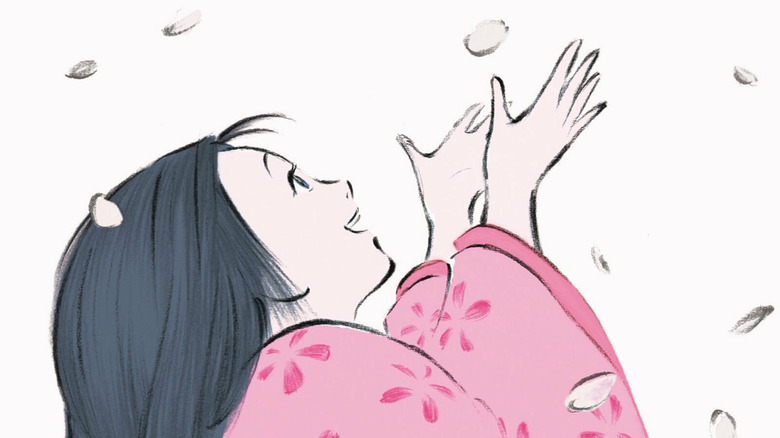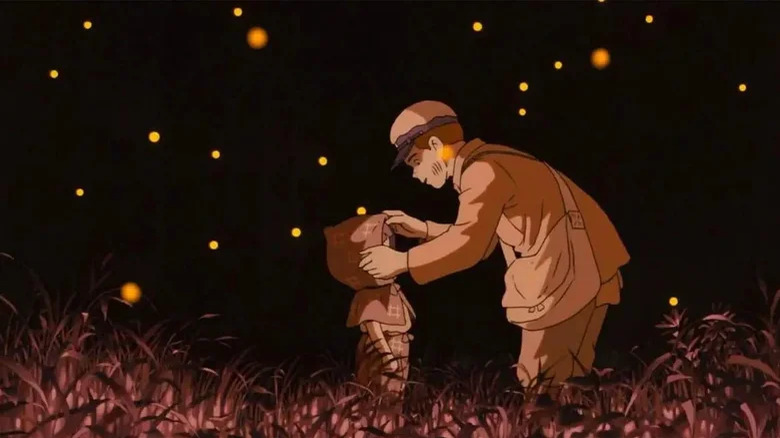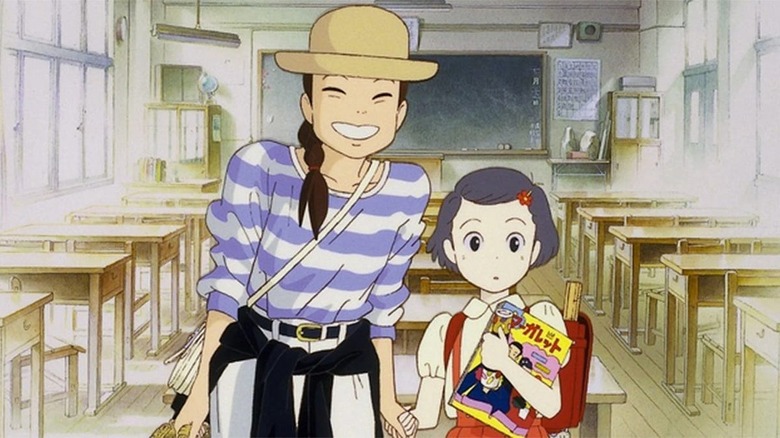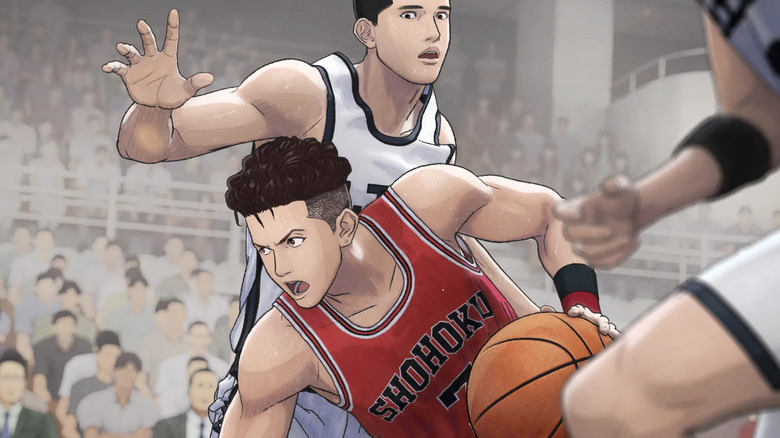There Are Four Perfect Anime Movies, According To Rotten Tomatoes
Rotten Tomatoes does not measure the quality of a movie, no matter what your favorite YouTuber says. What it does measure is the percentage of critics who think a movie is at least decent. The higher the Rotten Tomatoes score, the firmer the consensus is that a movie is at least "good," rather than, say, an exact quality score of the title.
Still, even if it doesn't exactly measure quality, a Rotten Tomatoes score is quite useful to get an idea of whether a movie has a wide appeal (meaning, it is likelier that vastly different people will agree the title is good) or if it's polarizing (meaning different people have vastly different opinions on the title). When it comes to anime, even if the genre is becoming more and more accessible, more mainstream, and more accepted, there are only four anime movies with a 100% certified fresh rating on Rotten Tomatoes.
What's curious is how different, yet very similar, the titles are. That's because, of the four movies, three of them — "Only Yesterday," "Grave of the Fireflies," and "The Tale of the Princess Kaguya" — are all directed by the same filmmaker. What makes this list fun is that the fourth movie is "The First Slam Dunk," a movie about basketball — one based on one of the biggest sports anime of all time, but still.
Now, it is easy to see why these movies all hold the enviable 100% certified fresh rating on Rotten Tomatoes, even if, at first glance, it seems strange that other iconic, better-known movies aren't on the list — like "Kiki's Delivery Service," the only anime movie on /Film's list of 100 best movies of all time.
Grave of the Fireflies (1988) and Only Yesterday (1991)
It might be surprising to see some big anime movies not on the list, like "Akira," "Your Name," the Oscar-winning "The Boy and the Heron" — or any Hayao Miyazaki movie. But that's because three of the coveted spots are for movies by legendary director Isao Takahata.
First up is "Grave of the Fireflies," which was part of Studio Ghibli's very own Barbenheimer and released the same day as "My Neighbor Totoro" — an epic double-feature and Ghibli's first release after "Castle in the Sky" marked its official launch. It's a harrowing drama about two orphan siblings trying not to die during the final months of WWII, and one of the best war films ever made. It's also completely different from Totoro," a raw, nuanced, meditative, emotionally devastating drama about the cost of war on the most vulnerable.
"Only Yesterday" came right after the success of "Kiki's Delivery Service" and offered a more adult take on what a Ghibli movie could be. It's the kind of movie that acts as a slap in the face to the idea of animation being a medium for kids, especially once the movie became the highest-grossing Japanese film that year in its home country. The film follows a woman going through a quarter-life crisis as she travels to the countryside to get away from the city life and reminisces about her childhood, only to find herself questioning whether she has betrayed her childhood self's dreams.
Takahata, while not as well-known in the West as his protégé, Miyazaki, is a huge part of why Studio Ghibli is as successful and influential as it is today. The duo's relationship was so strong that it influenced the plot of "The Boy and the Heron" and led to it changing after Takahata's passing.
The Tale of Princess Kaguya (2013)
Miyazaki may be the name that Ghibli is most associated with, but Takahata's experimental visuals and nuanced explorations of grief ran much deeper than his mentee and friend. While Miyazaki was often inspired in Western folklore and locations, Takahata's work was rooted in very specific Japanese aesthetics and stories. When Miyazaki did a movie about an anthropomorphic animal in "Porco Rosso," Takahata did "Pom Poko," best known as the movie about Japanese raccoon dogs that use their testicles as parachutes — while also being a phenomenal movie about nature personified declaring war on humanity for destroying it and some poignant commentary about how housing development is killing animals.
This movie is vastly different from, say, "My Neighbors the Yamadas," which is presented in the style of a comic strip. In turn, that movie is also different from arguably Takahata's masterpiece, his last movie, "The Tale of Princess Kaguya." Sketched in brushstroke to resemble traditional Japanese art, it is one of the most beautiful movies ever made, and one that should have won an Oscar for the scene of Kaguya running away alone.
Miyazaki is often referred to as an angry filmmaker, a man whose work grabs the audience and shakes them, screaming a message at them about what we are doing to the world. But if anything, Takahata's filmography is just as angry while also being rather sorrowful. It's as if Takahata, the older of the two, had already reached a sad resignation about the state of the world, and rather than scream in anger trying to change anything, he screams in pain and grief over what can never be recovered.
The First Slam Dunk (2023)
On a completely different side of the animation spectrum is the fourth film to have the coveted 100% certified fresh rating on Rotten Tomatoes — "The First Slam Dunk." Based on Takehiko Inoue's iconic and hugely influential manga series "Slam Dunk," the film is directed by Inoue himself. It's a very rare move that is reminiscent of Hayao Miyazaki adapting "Nausicaä of the Valley of the Wind" or Katsuhiro Otomo turning "Akira" into a film.
Inoue's involvement is a big reason why the film works. It's specifically an adaptation of the very last arc of the manga that was missing from the popular '90s adaptation, plus movie-original flashbacks. Where movies like "Demon Slayer: Mugen Train" require prior knowledge of its source material, and "Spy x Family: Code White" serves as a fun but inconsequential non-canon film, "The First Slam Dunk" finds the perfect balance between the two. For longtime fans, this is the cathartic resolution they've been waiting 30 years for. For those who have never heard of "Slam Dunk" or Shohoku High School, it's a riveting sports movie and one of the best basketball matches you can watch, fictional or not.
It helps that the film is a visual marvel, using a blend of 2D and 3D CGI that feels both real and fantastical at the same time, like watching the ultimate game, fluid and realistic when it has to be, and hyper-stylized when it suits the action. It's no wonder, then, that the film hit big with fans old and new. It even outgrossed "Avatar: The Way of Water" in Japan.



